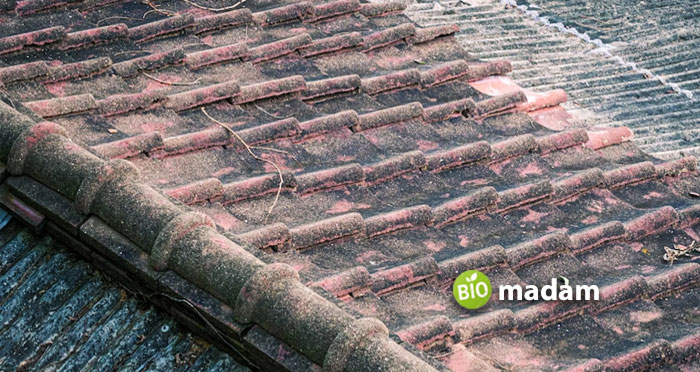We can often overlook the importance that roof design and ventilation play in creating a comfortable home, office, or other building. Yet proper roof design is essential for maintaining efficient indoor climate control. Aside from high energy costs, an improperly designed roof lead to uncomfortable temperature fluctuations throughout the year. In this blog post, we’ll explore how specific roof designs create great ventilation systems while keeping your indoor climates cozy and cost-effective!
Understand the Basics of Attic Ventilation
Attic ventilation is a critical component of home maintenance that is often overlooked. In fact, a properly ventilated attic can lower energy costs by reducing the amount of heat that accumulates in your attic during the warm summer months, and it can also help prevent moisture buildup in the winter. Without ventilation, your attic can become a breeding ground for mold and mildew, which can spread throughout your home and negatively impact your health. If you are looking for a professional to do your regular checkups, find information from https://www.amroofingva.com/ to know more about their services. After all, the roof protects your home from the elements, so it is important to ensure that you are taking all necessary precautions to keep it in top condition.

Look for Different Roof Designs
The design of a home’s roof can have a significant impact on the ventilation of the attic and the overall indoor air quality. For instance, a hip roof with a steep pitch will likely have more efficient ventilation due to the natural circulation of air. On the other hand, a flat roof may require mechanical ventilation to ensure adequate airflow.
The choice of roofing materials can also affect ventilation. A metal roof reflects heat and keeps the space below cooler, whereas an asphalt shingle roof may absorb heat and make the attic space warmer.
Benefits of Adequate Attic Ventilation
Adequate attic ventilation can provide numerous benefits to homeowners, with two of the most notable being increased energy efficiency and roof longevity. Let’s take a closer look.
Energy Efficiency
Inadequate ventilation can lead to a buildup of hot air in the attic, which can cause the temperature inside the home to rise, resulting in higher energy bills. With proper ventilation, you can significantly reduce your energy costs by keeping the air in the attic at a comfortable temperature.
Roof Longevity
When hot air builds up in an attic without adequate ventilation, it can cause damage to the roofing materials over time. This is especially true for asphalt shingle roofs, which are prone to cracking and curling when exposed to extreme temperatures. With proper ventilation, you can extend the life of your roof and reduce the need for costly repairs or replacements.
Reduced Moisture Damage
In addition to energy efficiency and roof longevity, proper attic ventilation can reduce the risk of moisture damage. In areas with high levels of humidity, warm moist air can build up in an attic without adequate ventilation, leading to mold and mildew growth and ultimately resulting in costly repairs.
Potential Problems Caused by Improper Attic Ventilation
Attics are an essential part of any home, serving as a storage space or even a living area. However, improper ventilation might cause numerous problems, including mold and ice dams.
Mold develops in moist environments, and without adequate ventilation, the attic can become stuffy and humid, making it an ideal breeding ground for mold. Ice dams are another potential issue caused by poor ventilation. As warm air escapes from the living area below and rises to the attic, it can melt the snow on the roof, leading to the formation of ice dams — they cause water to back up on the roof, leading to leaks and potential water damage.
Strategies to Improve Attic Ventilation
For many homeowners, the attic is often out of sight and out of mind. But ensuring proper ventilation in this space is crucial for maintaining the health and structural integrity of your home. Luckily, there are a few strategies you can implement to improve attic ventilation.
Add Vents
Adding vents to your roof is one of the best ways to improve attic ventilation — they allow warm air to escape from your attic, reducing the risk of moisture damage and helping you save money on energy bills. You can choose from a wide variety of vents, including gable end, off-ridge, and soffit vents.
Install an Attic Fan
Attic fans are designed to suck hot air out of the attic, maintaining a comfortable temperature and reducing energy costs.
Insulate Your Attic
Proper insulation can improve ventilation in your attic by keeping warm air from entering during the summer months and trapping it inside during the winter. There are a few different types of insulation you can choose from, including fiberglass, cellulose, and foam.

From increasing energy efficiency to reducing the risk of mold and water damage, proper attic ventilation can provide numerous benefits. There are a few strategies you can employ to ensure that your attic is adequately ventilated, including adding vents, installing an attic fan, and insulating the attic space. Armed with this knowledge, you can take the necessary steps to keep your home safe and comfortable.

Hi, they call me Jenna, and I am also known for achieving a gold medal during my Ph.D. in science life. I always had a dream to educate people through my utmost writing hobby. So, I chose this blogging path, and Biomadam gave me this opportunity to present for them. I now stand to entertain you. Continue reading my articles & discuss if you’ve any confusion through the comment section below.

